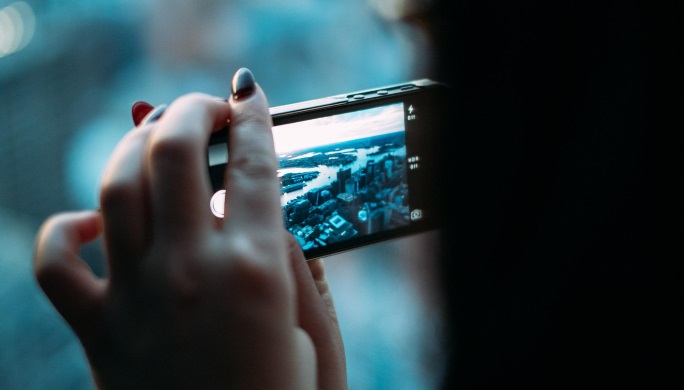
In January 2012, the definition of a ‘Kodak moment’ changed forever. For generations, the Kodak name was synonymous with photography, cameras, and capture lasting memories. When the company filed for Chapter 11, many who’d grown up with the brand were a little shell-shocked.
It shouldn’t have been a surprise. The industry had moved on from 35mm film, but Kodak didn’t really seem to know how to respond. Digital disruption of the photography industry went from top to bottom, affecting how people behave in public places, how we experience daily life and has even changed other industries entirely. Here’s how.
Everyone is an (Okay) Photographer
The digital camera has opened up a brand new arena for amateur photographers. Digital cameras are now so advanced that it’s difficult to take a bad picture. Here’s why:
-
* Throw enough mud, some of it will stick. The average 35mm film roll allowed you to take 24 or 36 photos. And you had to wait for the results. The new iPhone X, on the other hand, allows users to store anywhere between 70k-87k photos. This means that would-be photographers can take as many shots as they want until they get the right one. Eventually, something is going to be at least half-decent.
-
* Instant results. LCD screens come with every smartphone and digital camera. Known as “chimping”, users can now check their snap straight after taking it. No more running to the darkroom.
-
* Automatic mode. Most people have no idea what to do when it comes to film speed, aperture, shutter speed, or focus. That’s what the auto mode is for. Let the computers do the thinking for you.
All of this means that photography is no longer an elitist pursuit that’s reserved for the wealthy or for special events only. In 2018, for example, over 60% of 30-49 year-olds own a digital camera. And 77% of all Americans own a smartphone.
Capturing the Moment
Digital has allowed photography to infiltrate every aspect of our daily lives. Back in the 1990s, not many people would document their eating habits by taking a snap of their main course. Nowadays, however, there’s not a restaurant on the planet that hasn’t had its daily special featured on someone’s Instagram feed. In 2015, the photo-sharing site had over 300 million photos of food. The only thing that trumps this? You can probably guess - selfies.
Concerts and sporting events are also radically different. Instead of holding up lighters, gigs now feature a sea of mobile phones held aloft. People are now swapping the live experience for having the chance to record their memories. Some would call that a sorry exchange. Jack White, the former White Stripes member, has banned smartphones from his concerts. Yeah Yeah Yeahs made a similar request, asking punters to put away their devices and enjoy the live show.
The Print Industry Reinvented
Some would assume that the advent of digital has sent print photography to the scrapheap. Even your average technophobe is able to take a decent quality shot using a smartphone, while those using apps such as Instagram can edit them to produce beautiful photos that would have taken hours of Photoshop tinkering just a decade ago. But while digital technology has brought immense change to the industry, demand for print remains. Why?
In an interview from 2017, professional landscape photographer Paul Kowalski explains the importance of the tangible experience of photography. Seeing something on screen lacks the emotional punch and the longevity that a printed work offers. However, this doesn’t mean that the print industry hasn’t had to make adjustments. Production values have had to increase, with pixelated prints, shabby framing, and low-quality paper no longer passable.
The online photo printing industry has, perhaps surprisingly, experienced growth in the past few years. In the past half a decade, for instance, the industry saw a revenue growth to $3bn per annum in 2017, representing an 8.7% annual growth over the period. A combination of an increase in disposable income, the ability for people to take and store many photos easily (and instantly!), and businesses able to provide a variety of products (photo books, prints on paper, etc.), makes photo printing an attractive option.
Citizens = Journalists
The fact that people can take high-quality photos and share them instantly has led to a rise in citizen journalism. Think of the coverage of the Arab Spring, where citizens took the place of banned or censored journalists to record the events as they happened. Or the Occupy New York City bloggers, where people like Tim Pool recorded hours of video and thousands of photos.
This trend is only possible due to digital technology: cameras that can store and share data instantly, platforms like WordPress where the Average Joe can voice his opinions alongside his snaps, and countless social media outlets (Twitter, Facebook, Instagram) that are now used as news outlets by many (fake news, anyone?).
Not all change is good, however. There’s also has a dark side: in 2011, a stabbing in Glasgow, Scotland, was filmed by a score of onlookers. They did not intervene with the attack. Instead, they remained onlookers as they watched the victim suffer an almost deadly altercation.
| < Prev | Next > |
|---|





